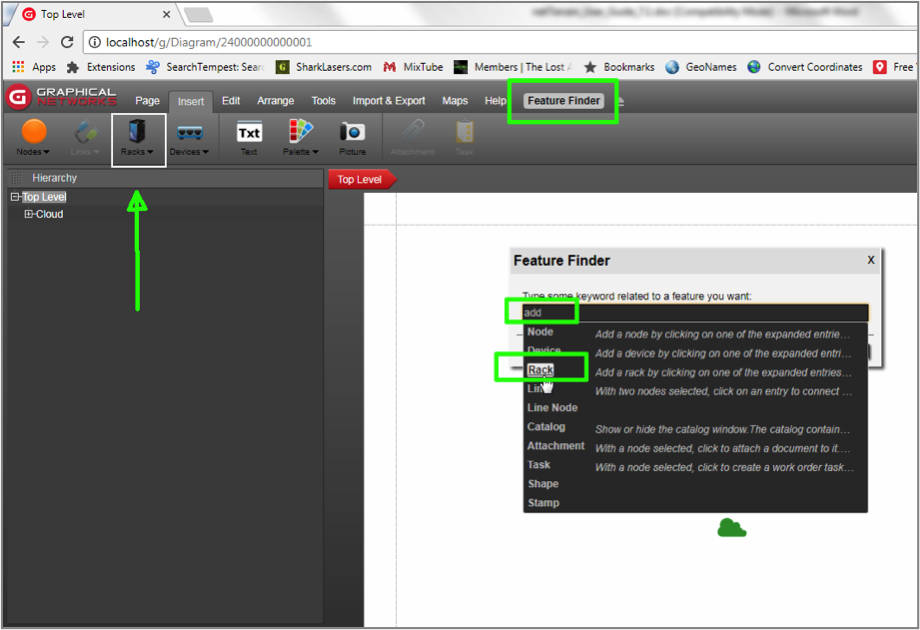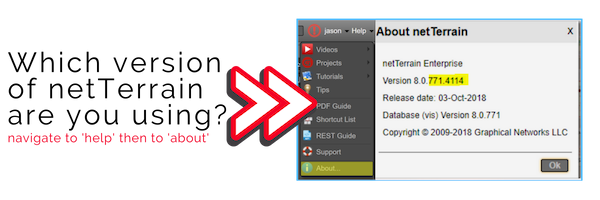
Welcome back to the next installment of our weekly update in which we do something a bit odd for a vendor: expose holes in our product! Let’s be honest: nothing is perfect — and by discussing problems netTerrain users have encountered, we want to foster a collaborative environment, share some workarounds around common issues and — why not, poke a little fun at ourselves.
“When is netTerrain coming out?”
As the release dates of a new version of our software approach, we get asked ‘when is netTerrain coming out?’ a lot…and so: this has definitely been the complaint of the week, or should I say the month. Now that we just announced version 8.1 this gives me a good excuse to share with you a little bit of the insight scoop of our cookbook, or in other words: our software release cycle.
For starters, we don’t have 3 different releases for our 3 software modules. netTerrain DCIM, Logical and OSP are all really just netTerrain when it comes to the engineering release cycle. The features associated with each module, whether it is
data center infrastructure management or network documentation or fiber plant documentation, are really just different features in the same code base.
This is a good thing…a very good thing. Why? It simplifies the entire release cycle and it forces us to architect our software in a much more extensible fashion. Above all else, though, it simplifies the job for our deployment efforts and our customers. Want to add a new module? Simply tap in a new license key and the features just unlock themselves. In essence, all release cycles, from an internal engineering standpoint, are simply associated with a version number for the whole software.
So, what are those release cycles? We typically have a major release once every year or year and a 1/2. A major release being one where the main number changes – such as netTerrain 6.0 or netTerrain 8.0.
What makes us determine if a major release number needs to be increased? That is a good question and the answer is: it’s a bit subjective. It depends on the amount, importance and quality of the features that we are adding to a new release. For instance, when we introduced a whole new DCIM monitoring set of capabilities we increased our major release number.
To recap: important milestones deserve a new major release number.
Next up: minor releases. Typically we have about 3 minor releases of netTerrain per year. We try to aim for one minor release every 3 or 4 months. Minor releases can also contain an array of new interesting features. For instance, believe it or not, when we released our new reporting engine, it was a minor release.
 The Feature Finder was introduced in a minor release of netTerrain (7.1)
The Feature Finder was introduced in a minor release of netTerrain (7.1)
In addition to major and minor releases there are also ‘point versions’ — but we don’t release these to the public anymore. Why not? Our software is mature and stable enough — as a result, we never find ourselves in a critical situation where we need to release a patch to fix something embarrassing.
So…why is it that people are clamoring for new versions when we’re about to release them? I would say that it is a good thing to start with! It means our customers are using the software!
Now, it is true that we tend to delay the release of our versions at the bitter end and not that I really wanna issue an excuse but: usually we can blame the documentation and the actual installer.
So there you have it: a brief summary of a netTerrain release cycle.
Finally, below are the different activities that go into each release:
- the development of the code itself, of course,
- testing,
- documentation
- and the installer/deployment.
As a netTerrain customer you are entitled to request support for the upgrade process itself — at no extra cost. This means that right before the release we usually begin pre-scheduling installations with many of our customers that feel more pressed for the new version. This is not to say that the installation is complicated (it is actually almost trivially simple). Because of the criticality of the application, however, many of our customers want to access some support from the vendor during the upgrade process, and we are happy to help.
